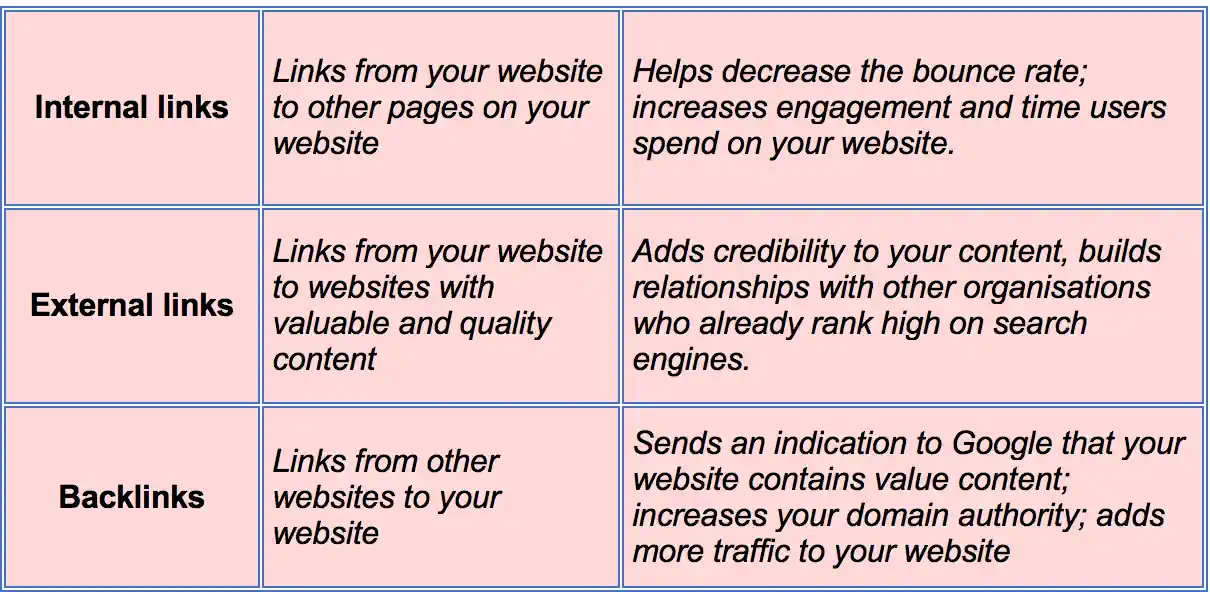On-page SEO is an important element in search engine optimization. You won’t get the excellent outcomes you desire if you don’t have good on-page SEO.
It includes everything from the words and phrases used on your page, to how fast it loads and what keywords are included in your URLs.
Keywords are an extremely important aspect. Because search engines will use keywords as hints to determine if your material is relevant or not, they’re critical.
If it has the specific keywords searched for by users frequently, there’s a much better chance of showing up first in their search results than those pages without those key phrases.
Since Google introduced the Hummingbird update, we’ve noticed a slew of changes in terms, especially long-tail keywords – and one of the most crucial ranking criteria is.
This was verified by Google’s Gary Illyes at Pubcon 2016 when he stated that keywords in the URL do impact the SEO ranking algorithm and that they matter for both desktop and mobile search rankings.
Let’s start by looking at all of the on-page factors you need to consider before we get into it. If you’re just getting started with on-page SEO, I’d like to explain what “On-page SEO” is.
What is On-Page SEO?
On-page SEO, often known as page optimization, is the practice of modifying web pages in order to rank higher and attract more relevant traffic from search engines.
One of the most important aspects of effective SEO is how your site is indexed by search engines. Your website won’t be found unless you’re fortunate enough to get on the front page by chance, which means it’s one of the most crucial parts.
This form of SEO is all about targeting keywords that your audience is actually searching for and then making sure that you include them in your content in a natural way.
On-page SEO is what allows you to get better ranks and traffic from the SERPs. There are a lot of “SEO professionals” on the market who promise high ranks and tons of visitors.
However, you must be wary since many of these companies are after your money only. They don’t get good results, so they attempt to persuade you that Google’s algorithm has been updated.
I’ve been in the internet marketing industry since 2009.
I understand what it takes for companies to get genuine results from their on-page SEO efforts. That’s why I wrote this post to assist any marketer in developing a successful on-page SEO strategy that will result in more search engine traffic.
In this post, I’ll show you twelve of the most effective methods to increase your rankings and get more website traffic.
On-page SEO activities include:
- Choosing the right keyword for your page.
- Optimize your content around that keyword.
- Make sure that you include the target long-tail keywords throughout your content in a natural way.
- Use page titles & meta descriptions correctly.
- Optimized URL Structure that includes your target keywords in URLs, image ALT tags and title tags.
- And so much more… (We’ll discuss all of that shortly.)
There are plenty of benefits to having good on-page SEO habits.
- You’ll start ranking higher in search results,
- you’ll get more targeted traffic from search engines and
- you’ll build a strong reputation in your industry.
But, without on-page SEO, you won’t see much success at all.
The following are 12 on-page SEO tactics that may help your site rank higher in search results and improve conversion rates.
1. Optimize Your Title Tag
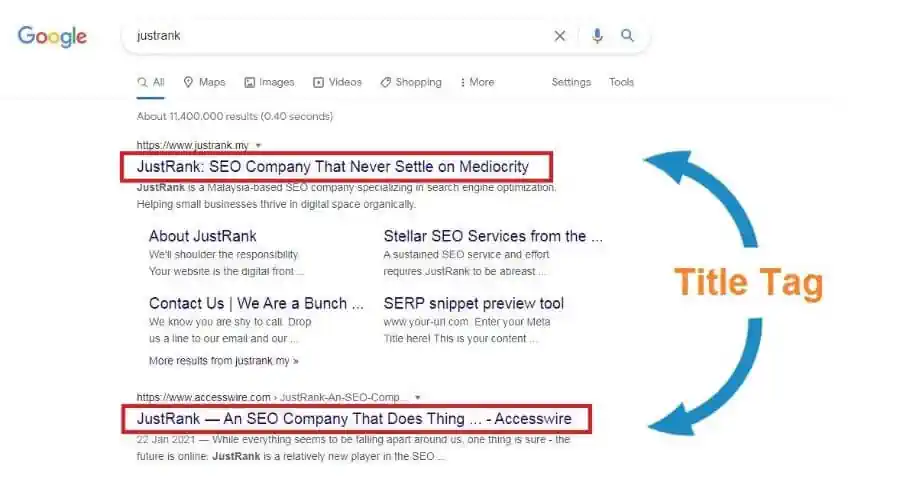
The first thing you should do is make sure that your page titles are well optimized.
Your title tags play an essential role in on-page SEO.
They are the titles of your web pages that show up in search engine results to help users decide which results they should click on.
Positively optimized title tags also help your CTR (click-through rate) and organic rankings as a result.
Your page title is one of the main places where you can put your target keyword or phrase…
Some of the most important on-page optimization factors have to do with your page title.
So, the first thing you need to do is come up with a great page title that’s going to catch the attention of your target audience as it relates to what they’re searching for.
Next, there are a few rules you need to follow when writing your page titles:
- Your title should not be more than 65 characters long.
- It’s preferable to keep your titles between 40 and 65 characters in length.
- You may have more than one H1 tag on a page, but the first is the most essential and should be as near as possible to the beginning of your title tag.
- The closer you get your keywords to the beginning, the more weight that Google will give them.
- All-capitalization is considered shouting and makes it harder for people to read your material, which reduces conversions (and revenue).
- Make sure your page title complements the tone of your content.
At the end of the day, the title you give your pages is what’s going to catch the attention of your audience.
It’s critical that you use keywords, but you must also ensure that using them makes sense based on the page’s focus.
2. Write Long, Detailed & Informative Content
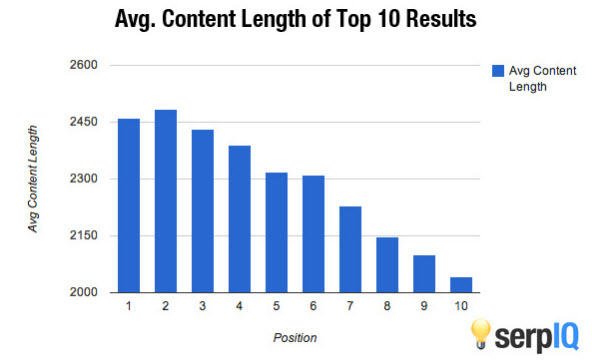
Lousy content = low value.
And, Google doesn’t want to send users to pages with no value.
That’s why they put such a heavy emphasis on the quality of your content.
They use things like user satisfaction and bounce rate as key metrics in their ranking algorithm.
Long content is much better at ranking higher on SERPs because it provides more value to the reader.
But what exactly do I mean by ‘long content’?
Great question… Here’s the thing:
You don’t need to write a novel.
So how long should your blog posts be?
It all depends on what you’re publishing and your target audience.
As a rule of thumb, the typical blog article is between 1,000 and 2,000 words (which is roughly 5 to 10 pages in word-document format).
If you’re writing about technical topics or if your target demographic isn’t made up of many novices, you may go light on the text.
And, whether you’re going after more novice internet users or not, chances are they won’t stay for long.
HubSpot, for example, produces some fantastic blog articles that are mostly lists and infographics.
The average blog post on their site comes in around 1,400 words.
A blog post of that length provides a lot of value to the reader and is appropriate for most B2B websites.
3. Create Unique & Quality Content
The quality of your content is just as important as its length.
You need to produce unique and valuable content that people will link to.
Google understands that the web has a ton of information and that many times it’s hard for users to sort through all the garbage and find what they’re looking for.
And, while Google can’t really tell you exactly what type of content will perform well, they do have some strong recommendations.
Here are some types of articles that they recommend on their site:
How-to articles (with instructions), List posts, Videos, Guides, Templates, and Infographics.
To rank highly on Google, you need to create unique and quality content.
There are TONS of people trying to game Google by stealing content they find online and publishing it as their own.
If Developing a website is a big task, and maintaining is even bigger. We specialize in making the maintenance of your website is full of garbage, nobody will link to it…
And when nobody links to your site, mm… Google won’t treat it like a real business.
And, when you aren’t treated like a business; your money-making potential plummets (because nobody is going to buy products and services from your website).
Consider yourself a potential customer or user while determining what to include in your blog post.
4. Optimize Your Images For SEO
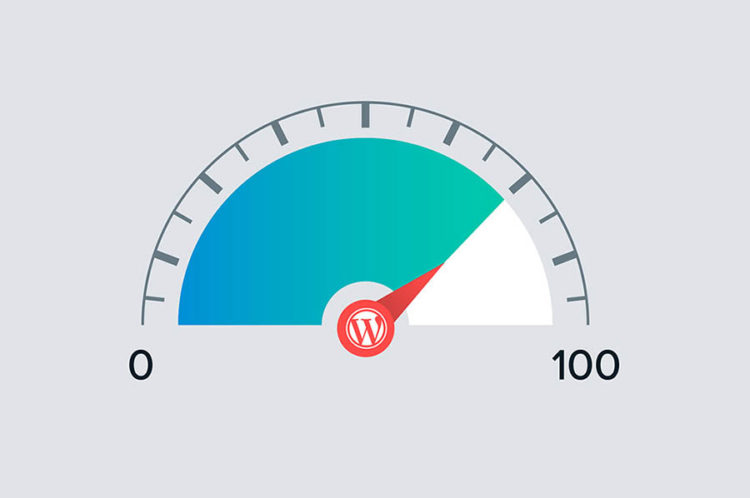
Oh yeah!
It’s critical to optimize your images for SEO if you want to rank highly on Google.
Every image has a little piece of HTML code beneath it, although most people are unaware of this.
And, if you’re in a WordPress site (which most marketers and bloggers are), then chances are that you’re using the ‘RankMath SEO plugin‘ (if not, what’s wrong with you?)
Haha.
Anyway, what this awesome plugin does is it automatically generates HTML images (for any image you upload or add using the ‘Add Media’ button in your post editor).
And, in order to optimize your images for SEO, all you need to do is make sure that each one has a well-written alt tag and caption.
Here are some simple ways to get the most out of your images:
- Title & Alt Tags – Give each picture a descriptive title and alt tag (alt-text).
- They should include relevant keywords without sounding spammy.
- Keep it within the length limits (20-40 characters).
- File Names – Keep your titles short and to the point. You may also add relevant keywords to the file name, followed by your brand’s name or website URL. For example, bike.jpg is much better than img3745.jpg.
5. Optimize Your Website For Speed
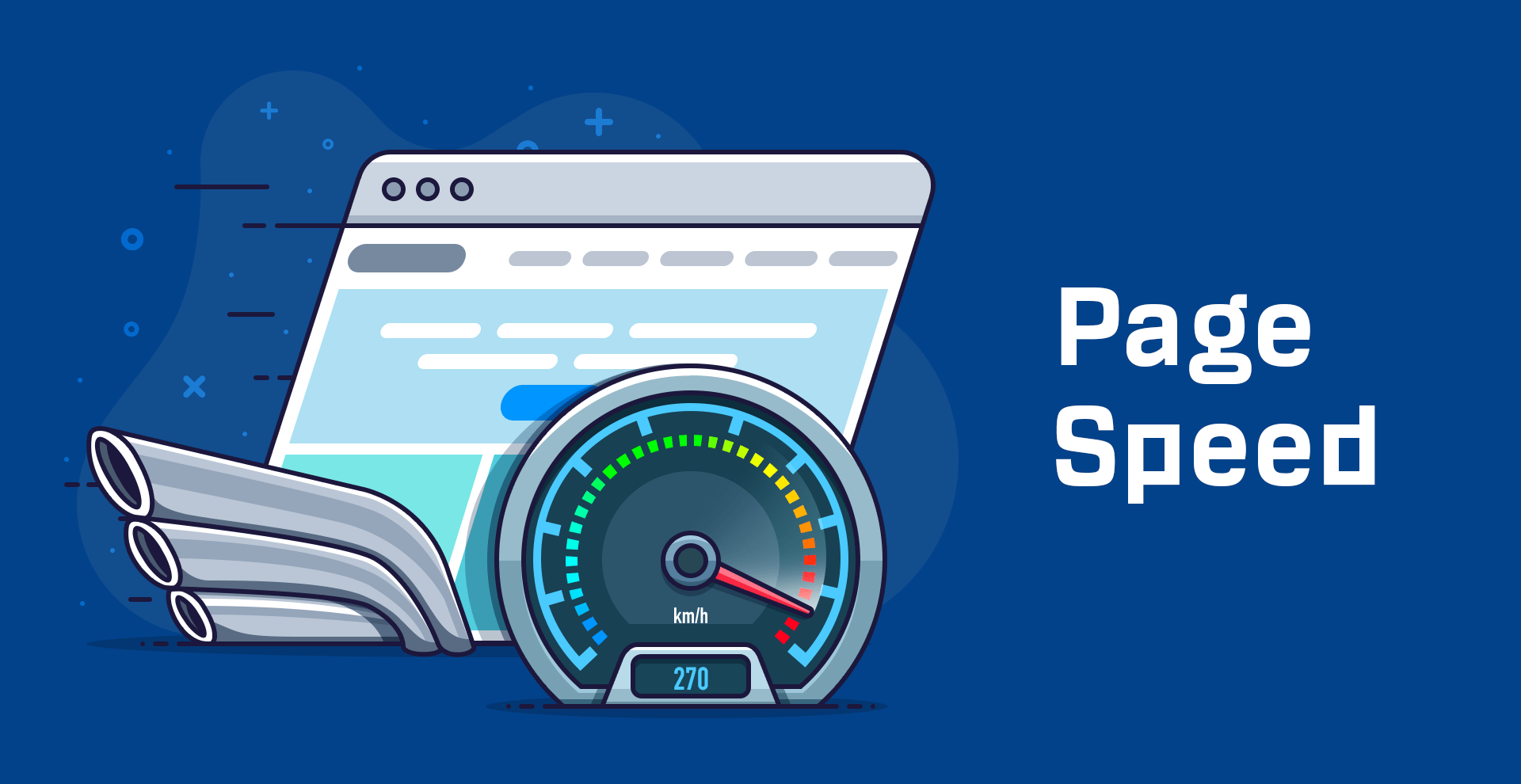
According to studies, half of all mobile users think a website should load in two seconds or less.
Customers will depart your website if it takes more than three seconds to load. That is a reality.
A website that takes more than three seconds to load has a 60% abandonment rate and less than a 30% repeat visit rate. This is true for all websites today.
This implies you’ll need to use the appropriate web hosting plan, your images must be optimized for size, and you should follow other SEO best practices.
Here are some of the top web hosting firms to consider for your website.
6. Optimize Your Content For Mobile

Mobile searches have officially surpassed desktop searches.
In other words, you need to make sure your content is easily accessible and readable on mobile devices.
Why?
Because people want information right when they’re looking for it… not when they get home at night or in their office the next day.
Here are some interesting statistics:
- Each day, more than half of Google’s queries are conducted on mobile devices.
- Customers will abandon a website that takes more than three seconds to load, according to over 70% of consumers.
- The Internet is now available in over 60% of the planet’s population, with nearly half of those users engaging primarily through mobile devices.
As you can see, your website needs to be optimized for a mobile audience.
7. Write For Humans, Not Search Engines
Your content’s primary goal should not be to appear on Google’s top page alone. It’s to provide excellent value to those who are searching for what you have to say.
If your users find something of value on your blog, they’ll return for more. They’ll leave if they don’t find anything of value, and they’ll never return.
You can optimize your site for Search Engine Optimization (SEO) to make things go a little faster, but don’t let it distract you from your ultimate goal: to produce fantastic content that readers will enjoy reading.
Here are six simple ways to write better content:
- Consider what your target audience would be interested in and create a character around them. Start by describing their needs and problems, then demonstrate how you may help them.
- Make a unique and intriguing blog using the stuff you won’t find on any other site.
- Organize your content in such a way that it is simple for readers to comprehend.
- Use a lot of real-world advice, examples, statistics, and remarks from industry experts.
- Don’t go off on tangents or ramble about non-related subjects. Get to the point immediately.
- Use Schema Markup for better SERP CTRs
8. Create Relevant Internal & External Links
Websites with a lot of internal links distribute more link juice around. It also helps customers browse your website to locate what they’re looking for quickly.
The context of your material may be indicated by external linking, which will help search engines rate it higher.
Here are some simple rules to follow when creating quality links:
- Keep the links relevant – Only link to reputable websites that are relevant to your content. If you’re linking from a post about dog training to a story about cat education, make sure it’s relevant in your context.
- Link within the content – Dense blocks of links is both inconvenient for users and unprofessional.
- Use relevant, descriptive anchor text – The correct keyword should be used in the page title to help search engines better rank your page. This informs search engines what your link is about so they can rank it higher.
9. Optimize Your Site Structure
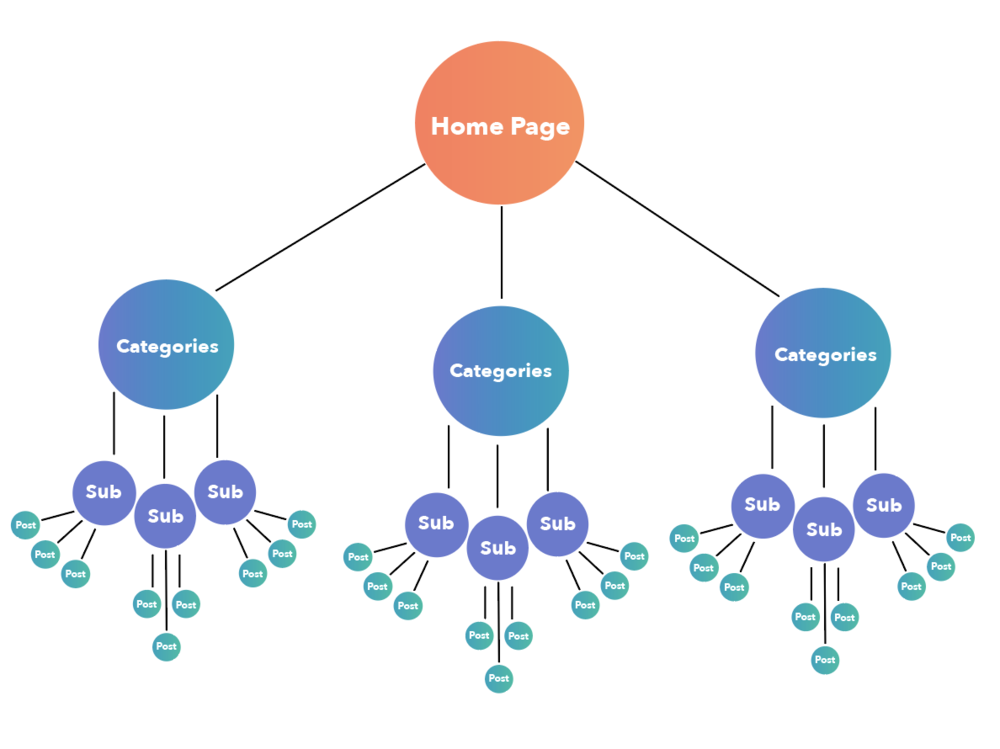
You can’t expect to rank your website highly if it doesn’t have a solid structure.
It’s important to have a strong website architecture in order to optimize your SEO. Internal links, speed, and site hierarchy are all aspects of a good site structure that must be considered.
Here are some quick tips when planning your next website redesign:
- Use the right HTML tags – Make sure your pages include the proper use of heading tags (H1, H2, and so on) to inform search engines what the material is about.
- Use descriptive URLs – Your page URLs should clearly identify the content of your pages so that search engines can easily index them. To guarantee that they are not cut-off in SERPs, make sure they are under 100 characters long.
- Create links with a clear hierarchy – If you link from one internal article to another, make sure the connections are correct. Don’t just connect to a page without providing a clear purpose.
- Don’t forget about your blog – Google favours new material, therefore they’ll like you if you give fresh stuff on a regular basis. A blog might be an excellent addition to your website, but it must be developed and structured correctly in order for it to provide the best SEO results.
- Find ways to group related articles together so that Google can easily understand their relationship.
For example, if you’re running an online clothing store then you might want to group all t-shirts under one category, all trousers under another category and so on.
10. Build Authentic Links
You should always aim to create links through guest posting, link recovery and link creation.
However, Google is smart enough to know when you’re buying links or participating in black hat search engine optimization techniques.
If you want to see results, your website’s authority online is essential.
Here are some ways to do that:
Guest blogging – One of the most popular strategies employed by marketers in a variety of industries is guest blogging. It offers exposure for both the site owner and the blogger while also providing a contextual backlink that has SEO benefits.
Link reclamation – Link reclamation is a method for extracting and repairing broken links on other sites. It’s an excellent approach to obtain high-quality do-follow connections from authoritative websites.
Broken link building – Broken link creation is a popular internet marketing strategy that entails locating websites on the internet that connect to pages with a 404 status.
After all, no one wants to post a dead link, so your assistance in repairing it is very much appreciated.
Broken link building – This strategy is almost identical to the one above but it requires more work on your end. You need to search for sites that have broken links and then contact the site owner to replace them with your own link.
11. Use Table of Contents
A table of contents is an excellent tool for quickly and easily navigating your website.
Long-form content is popular these days, but few people want to read lengthy posts.
If you’re looking to rank for the phrase “on-page SEO,” your article should have a minimum length of 2000 words. This provides Google with enough data to determine whether or not your post is relevant.
Having a “Table of contents” helps improve user experience and keep visitors on your site longer which is great for SEO purposes.
You don’t need to insert a table of contents manually in WordPress or any other CMS, there are plugins that do the job for you.
12. Use AI To Improve UX
Earlier, we spoke about Google using AI to provide a better user experience.
And although AI can’t completely take over SEO tasks from humans, it is already more than capable of helping website owners optimize their on-page factors that have an impact on search engine rankings.
AI technology helps us integrate elements such as social sharing buttons, advertisements and related posts sections.
With AI, you can easily integrate ads so that users don’t feel the need to leave your website just to click on some ads found on other websites.
Make your website intelligent with Artificial Intelligence (AI)!
Final Thoughts: SEO has become one of the most potent weapons in a marketer’s arsenal today. It takes hard effort and patience, but if done correctly, you will see benefits over time.
As we said earlier on, we can’t tell you how to rank your website in Google because there are so many variables involved.
However, with the 12 important SEO strategies listed above, you should see some improvements sooner rather than later.
Please don’t hesitate to contact me if you have any queries, and I’ll respond as soon as possible.
Good luck!
AUTHOR BIO
Vikas Solanki is a 15-year industry veteran and award-winning restaurateur, entrepreneur, cryptocurrency trader, and internet marketer.
On BestinIndia.com, he passionately blogs about the newest SEO and digital marketing trends, food, fitness, technology, and lifestyle.

